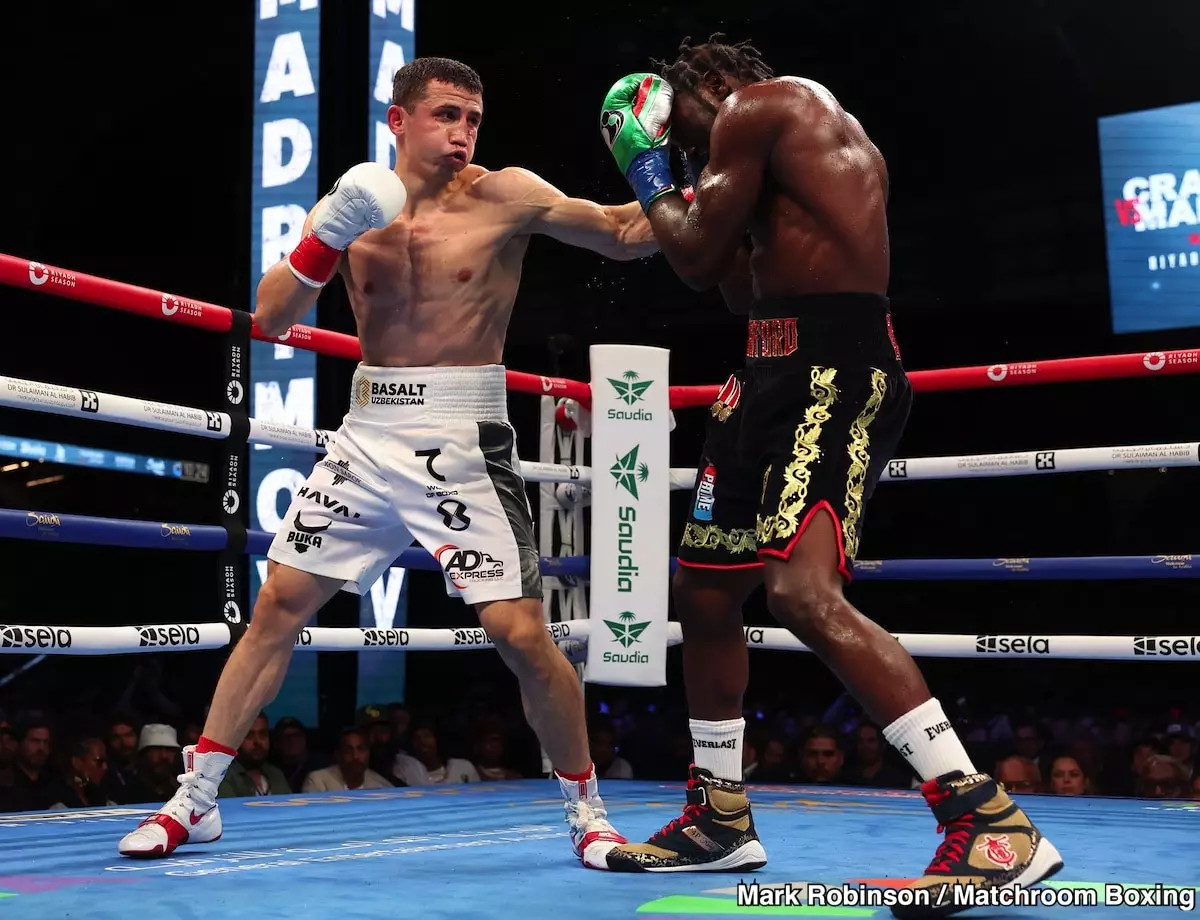In the ever-evolving world of professional boxing, matchup predictions and potential fights often stir the pot of anticipation. One such enticing possibility is a bout between Canelo Alvarez and Terence Crawford, as proposed by promoter Tom Loeffler. With a wealth of experience managing Gennadiy Golovkin during his trilogy against Canelo, Loeffler’s insights carry weight. However, even with the glitz of a potential fantasy matchup, the realities of the situation present challenges worth dissecting.
The prospect of Canelo Alvarez (62-2-2, 39 KOs) facing Terence Crawford (41-0, 31 KOs) at 168 pounds invites both excitement and skepticism. Canelo has established himself as a dominant force in the super middleweight category, renowned for his power and ring intelligence. In contrast, Crawford, attempting to jump two weight classes, faces a steep hill to climb. Loeffler’s observations emphasize that this weight transition could be daunting for Crawford, who exhibited signs of struggle in his 154-pound debut against Israil Madrimov.
Crawford’s potential inactivity leading into this hypothetical fight poses another significant hurdle. With nearly 13 months without a bout if he waits until September, he risks losing his competitive edge. Most fighters will tell you that nothing compares to the ring experience gained from active fighting. As Crawford approaches 38 years old, the question arises: can he recover from such a long layoff and compete at the highest level against a seasoned competitor like Canelo?
Moreover, the historical pattern of struggle when moving up in weight class remains relevant. Notably, Crawford has excelled at lower weights, but scaling up to face someone of Canelo’s caliber might reveal limitations. In boxing, the physical and mental adjustments required when stepping up in weight can dramatically influence performance. Loeffler points out that Crawford’s previous bout at 154 did not show his usual dominance, raising further concerns about how he may fare at 168.
Delving deeper into the motivations behind this potential fight, the prevailing assumption is that financial incentives surmount the desire for legacy. Crawford’s history of seeking high-profile bouts can often lead one to question whether his passion lies in accolades or paychecks. Loeffler posits that if it were about solidifying a legacy, Crawford might be better served by facing credible opponents within his target division before diving straight into a contest against Canelo.
This financial angle reveals the reality of modern boxing, where monetary gain often drives decisions. The emergence of promotion executives like Turki Al-Sheikh, who may assist Crawford in securing high-stakes matches, further illustrates the complexities facing fighters today. Should Crawford’s reputation solely rest on the backing of such figures without any required merit in terms of facing established fighters, it would provide a skewed narrative of his capabilities.
As both fighters vie for relevance in an increasingly competitive sport, age becomes an undeniable factor. Canelo, despite having experienced a slight decline in performance after his matchups with Golovkin, still possesses the fight IQ and skill set necessary to capitalize on an opponent’s weaknesses. Loeffler suggests that both fighters are at critical junctures in their careers, which elevates the potential stakes of the encounter.
The juxtaposition of Canelo’s physicality against Crawford’s skill set can be captivating. Alkalah has always been praised for his sharp boxing mind and adaptability, yet the reality of facing Canelo—a fighter more experienced with the nuances of the super middleweight division—serves as a compelling narrative thread.
While the idea of a Canelo Alvarez versus Terence Crawford fight undoubtedly excites boxing enthusiasts, practical considerations lead to skepticism. Weight class challenges, inactivity, and underlying motivations raise questions about the feasibility of such a contest and its implications for both fighters’ legacies.
For promoters and fans alike, the dream of witnessing these two boxing giants meet in the ring may persist, but as the dynamics of boxing evolve, so too must our expectations. The sport demands the best of its athletes, but whether the best can clash remains a subject of intrigue rather than assured excitement. Ultimately, only time will reveal if this much-discussed matchup is realized, and whether it lives up to its lofty potential.

